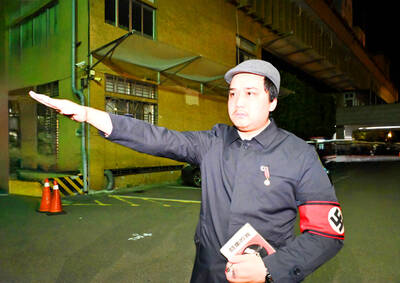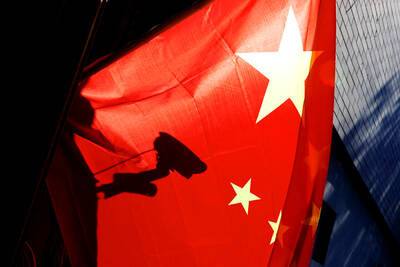US President Barack Obama announced on Saturday the framework for a vast free-trade agreement spanning the Pacific as he sought a new era of US leadership in a fast-growing region.
“Together we can boost exports and create more goods available for our consumers, create new jobs, compete, win in the markets of the future,” Obama said, framing the Asia-Pacific as the key to restoring global economic growth.
Leaders from nearly 20 nations, including China and Japan, gathered for weekend meetings in Hawaii, where sunbathers and surfers had to skirt beach barricades and traffic snarls frustrated the famously laid-back locals.
Obama said nine countries had reached a “broad outline” on a free-trade pact called the Trans-Pacific Partnership (TPP) and hoped by next year to be working on the legal text of a full agreement.
Japanese Prime Minister Yoshihiko Noda gave a major boost ahead of the summit as his nation became the 10th member of the TPP, meaning that it will cover more than one-third of the global economy and could develop into the world’s biggest free-trade zone, dwarfing the EU.
“I have been extremely impressed already with the boldness of his vision,” Obama said after meeting Noda ahead of yesterday’s formal opening of the APEC forum.
Obama has set a goal of doubling exports to create badly needed jobs at home, but he also hopes that the TPP will serve as a strategic linchpin as the US winds down wars in Iraq and Afghanistan and refocuses on Asia.
Pressing the US case for the TPP, Obama said that the emerging -agreement would be a 21st-century deal that ensures high environmental and labor standards and addresses new barriers other than tariffs.
“I’m confident we can get this done,” he said.
The TPP was signed in 2005 as an obscure agreement among Brunei, Chile, New Zealand and Singapore. Obama suddenly turned it into the cornerstone of the US’ free-trade drive, with Australia, Japan, Malaysia, Peru, the US and Vietnam now also in the talks.
In a joint statement, leaders of TPP nations said they shared a “strong interest” in expanding their membership.
The major outlier of the TPP is China, the world’s second-largest economy. Obama, shortly before holding talks with Chinese President Hu Jintao (胡錦濤), warned that Beijing must “play by the rules” in international trade and intellectual property protection.
The US has not explicitly ruled out China’s entrance into the TPP, but US Secretary of State Hillary Rodham Clinton has linked the trade agreement to fundamental values, including openness and labor standards.
“It’s very important for China to join eventually, and China has left that possibility open,” said Peter Petri, an expert from the East-West Center thinktank.
“There are now differences between the US and China on some provisions, for example, rules about trade by state-owned enterprises. But it’s best to think of this not as breaking up the region, but as a move in a ‘bargaining game’ about what rules will govern cooperation,” Petri said.
Despite the US’ optimism about the TPP, Obama said that there would be “difficulties” and “sensitivities” among member countries. Most experts believe it will take years before a concrete agreement can come to fruition.
The details of the trade agreement remain vague and opposition has already built in several countries. Some farm groups in Japan and the US have voiced alarm that they would be swamped by global competition.

SECURITY: As China is ‘reshaping’ Hong Kong’s population, Taiwan must raise the eligibility threshold for applications from Hong Kongers, Chiu Chui-cheng said When Hong Kong and Macau citizens apply for residency in Taiwan, it would be under a new category that includes a “national security observation period,” Mainland Affairs Council (MAC) Minister Chiu Chui-cheng (邱垂正) said yesterday. President William Lai (賴清德) on March 13 announced 17 strategies to counter China’s aggression toward Taiwan, including incorporating national security considerations into the review process for residency applications from Hong Kong and Macau citizens. The situation in Hong Kong is constantly changing, Chiu said to media yesterday on the sidelines of the Taipei Technology Run hosted by the Taipei Neihu Technology Park Development Association. With

A US Marine Corps regiment equipped with Naval Strike Missiles (NSM) is set to participate in the upcoming Balikatan 25 exercise in the Luzon Strait, marking the system’s first-ever deployment in the Philippines. US and Philippine officials have separately confirmed that the Navy Marine Expeditionary Ship Interdiction System (NMESIS) — the mobile launch platform for the Naval Strike Missile — would take part in the joint exercise. The missiles are being deployed to “a strategic first island chain chokepoint” in the waters between Taiwan proper and the Philippines, US-based Naval News reported. “The Luzon Strait and Bashi Channel represent a critical access

‘FORM OF PROTEST’: The German Institute Taipei said it was ‘shocked’ to see Nazi symbolism used in connection with political aims as it condemned the incident Sung Chien-liang (宋建樑), who led efforts to recall Democratic Progressive Party (DPP) Legislator Lee Kun-cheng (李坤城), was released on bail of NT$80,000 yesterday amid an outcry over a Nazi armband he wore to questioning the night before. Sung arrived at the New Taipei City District Prosecutors’ Office for questioning in a recall petition forgery case on Tuesday night wearing a red armband bearing a swastika, carrying a copy of Adolf Hitler’s Mein Kampf and giving a Nazi salute. Sung left the building at 1:15am without the armband and apparently covering the book with a coat. This is a serious international scandal and Chinese

COUNTERINTELLIGENCE TRAINING: The ministry said 87.5 percent of the apprehended Chinese agents were reported by service members they tried to lure into becoming spies Taiwanese organized crime, illegal money lenders, temples and civic groups are complicit in Beijing’s infiltration of the armed forces, the Ministry of National Defense (MND) said in a report yesterday. Retired service members who had been turned to Beijing’s cause mainly relied on those channels to infiltrate the Taiwanese military, according to the report to be submitted to lawmakers ahead of tomorrow’s hearing on Chinese espionage in the military. Chinese intelligence typically used blackmail, Internet-based communications, bribery or debts to loan sharks to leverage active service personnel to do its bidding, it said. China’s main goals are to collect intelligence, and develop a